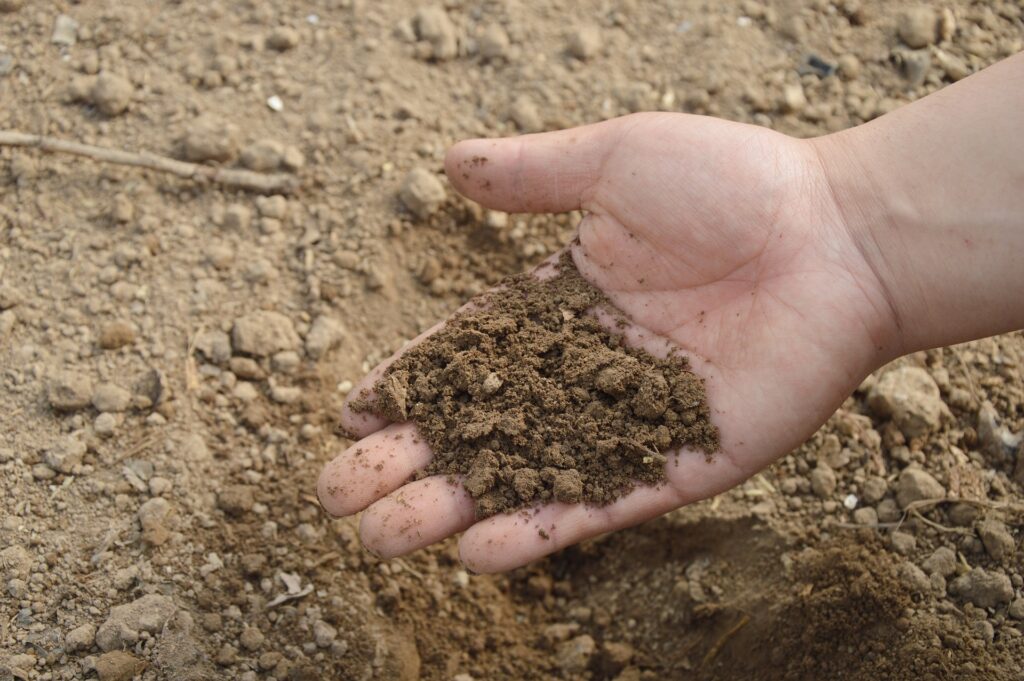As the world’s population grows, the demand for energy and raw materials is increasing, putting
more pressure on agriculture. It is therefore not surprising that the environmental impact of the
agricultural sector’s activities has increased significantly over the past decades. The input of
nutrients into the soil is essential for efficient crop production. The most popular and important
way of enriching the soil nutrient pool is through the use of mineral fertilisers. However, the
intensive use of mineral fertilisers to increase crop yields has a number of negative effects on the
environment: leaching of nitrates into the groundwater, intensification of eutrophication
processes, disturbance of the soil elemental balance, pollution by nitrogen oxides. In addition,
the production of mineral fertilisers is a major greenhouse gas emission and a process that
requires large amounts of energy and raw material resources.

Water pollution
One of the most important negative impacts of intensive fertiliser use is eutrophication of surface
water bodies. Eutrophication is the alteration of an ecosystem caused by an excess of biogenic
substances (usually nitrogen and phosphorus compounds). Typically, eutrophication is
characterised by accelerated vegetation growth leading to a loss of species diversity, as only
some species grow rapidly, disrupting the ecosystem’s normal trophic (nutrient) relationships and
eventually leading to the loss or migration of plants and the animal species that depend on them.
In the eutrophic phase, the productivity of the water body is particularly enhanced, which leads
to oxygen consumption, resulting in the loss of plants and animals. The growth of anaerobic
bacteria is stimulated, which in turn decompose organic matter by releasing hydrogen sulphide.
Gradually, these processes turn the water body into a wetland.
Eutrophication can occur as a natural process, but it is also often accelerated by industrial air
pollution and untreated municipal wastewater, in addition to the use of inadequate fertiliser. In
ecological terms, eutrophication means reduced species diversity, changes in interspecies
relationships and toxicity. It also affects humans by reducing opportunities for activities such as
fishing, hunting and aesthetic enjoyment of the environment. In some cases, such as in reservoirs
with an increase in toxic algae (phytotoxins), there is a threat to human health.
Eutrophication was identified as a pollution problem in the mid-20th century and has been
growing since then. Studies carried out up to 2008 show that 54 lakes in Asia, 53 in Europe, 48
in North America, 41 in South America and 28 in Africa are eutrophicated. In Lithuania, too, the
process is intensifying. The country’s agricultural activities contribute around 25,000 tonnes of
nitrogen and over 2 tonnes of phosphorus to the Baltic waters, or 25-35% of the total amount
entering the rivers. In 2006, Vaitiekūnienė analysed the water quality of 130 Lithuanian rivers
and found that about 72% of the phosphorus and 98% of the nitrates in the country’s waters are
caused by agricultural pollution. Water treatment, fertiliser and pollution control are used to stop
eutrophication of water bodies.
Soil pollution
According to research and studies, the effects of chemical fertilisers on soil are not immediately
clear. At first, the effects may not be noticeable, as soil is a strong buffer due to its composition.
Over time, however, the intensive use of mineral fertilisers leads to a deterioration in soil
fertility, a deterioration in the soil’s degradation reaction, which leads to an imbalance of various
elements. In this case, toxic substances accumulate in the vicinity of the plants, the use of which
causes negative effects on humans and animals.
Unreasonable nitrogen fertiliser application rates deteriorate soil structure, cause acidification
and lead to a reduction in agricultural efficiency. Higher nitrogen levels limit the activity of
nitrifying bacteria and other micro-organisms. As a consequence, biological nitrogen uptake is
limited and losses are higher in the context of the whole soil nitrogen cycle. In addition, over-
fertilisation of grasslands or soils with nitrogen fertilisers leads to the proliferation of nitrophiles
(nettles, thistles, thistle, burdock, honeysuckle), which overwhelm the natural plant communities
and agricultural plants.
The abundant use of fertilisers is a major obstacle to the rational use of the soil, as is the
pollution of the soil with toxic substances such as heavy metals and radionuclides. Toxic
substances disrupt the natural plant-soil bonds and reduce the biological activity of soil. In
addition, toxic substances can enter animal and human bodies through plant food and cause
poisoning or have mutagenic or cancerous effects. For example, high levels of potassium
fertilisers imbalance the balance between Fe and Zn elements, leading to impaired nutrient
uptake by plants. However, the most significant effects of excess fertiliser are observed on soil micro-organisms, as unbalanced application of potassium fertilisers leads to the death of various
worms and soil mites.
Air pollution
Unbalanced and inefficient use of mineral fertilisers contributes to the greenhouse effect. The
indiscriminate use of nitrogen fertilisers releases nitrogen oxides (NO, N2, NO2) into the air,
which contribute to the greenhouse effect. However, this is only the direct impact of fertiliser use
on air quality. A much more complex and more widely discussed impact on environmental
quality, in this case specifically on air, is to be found in the whole life cycle of mineral fertilisers.
Life cycle assessment is an excellent tool for quantifying and assessing the environmental
impacts of different products throughout their life cycle. This method assesses the entire life
cycle of a product (from production to consumption) – the extraction or production of the raw
material, its processing and transport, the production of main and by-products, the disposal or
recovery of waste, and the use of the product and its residues.
Many studies of this kind have shown that agriculture contributes between 10-12% of global
greenhouse gas emissions, of which 38% are from fertiliser production. For a more general
picture of the quantities and emissions required for the production of NPK fertilisers.
Thus, when assessing the impact of chemical fertilisers on sustainable agricultural development,
it is necessary to take into account not only their benefits in terms of increasing agricultural
productivity, but also the environmental aspects that should be considered when analysing the
entire life cycle of chemical fertilisers. In addition to improving the efficiency of chemical
fertiliser use, it is also necessary to improve the productivity and efficiency of the production
processes, while reducing the environmental impact.


No responses yet